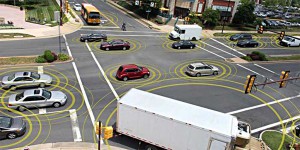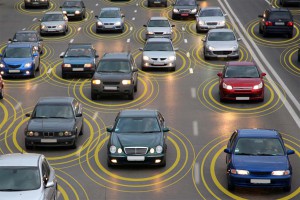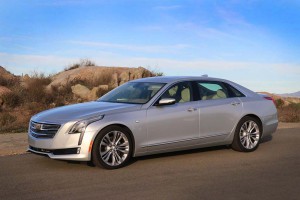The nation’s top transportation officials want to see all new cars, trucks and crossovers equipped with Vehicle-to-Vehicle, or V2V, communications systems within five years, technology that Transportation Secretary Anthony Foxx said Tuesday could help “avoid or mitigate” as much as 80% of the crashes that occur on U.S. highways.
The proposed guidelines, FMVSS 150, now will be the subject of a 90-day public comment period. Foxx said he expects the rules to be formally locked in place a year later. That would mean that at least 50% of the passenger vehicles sold in the U.S. would be equipped with V2V transceivers by the middle of the 2020 model-year, with 100% compliance by 2022.
“It has been estimated that up to 80% of non-impaired collisions could be avoided or mitigated to reduce injuries” with the widespread use of V2V technology, said Sec. Foxx, who also said the Department of Transportation will now consider the possibility of requiring V2V systems on commercial trucks, as well.
V2V technology allows vehicles to “talk” to one another, sharing their location, speed and direction. That information could be used to prevent accidents in a number of situations, such as a vehicle making a left turn in front of oncoming traffic. It would also provide “360 degree awareness,” said the Transportation Department chief, for drivers who try to make a pass on a curvy road, alerting them to unseen, oncoming traffic.
In such an instance, an alert would sound to alert the driver and, if they failed to respond, the system would be able to trigger the car’s automatic emergency braking system or other crash-avoidance technologies.

Initially, the rules cover only passenger cars, but trucks and other transportation modes could follow.
Several automakers have already announced plans to add V2V systems to their vehicles. Cadillac, for example, will begin adding such technology on the new CT6 sedan, but as final standards have not been established, only vehicles equipped with the Cadillac hardware will, at least initially, be able to talk to one another.
(Toyota, Microsoft team up on connected car project. Click Here to learn more.)
According to Mark Rosekind, the administrator of the National Highway Traffic Safety Administration, V2V technology would serve as the “foundation” for a number of other driver assistance and even more advanced technologies now under development. That includes the autonomous and fully driverless vehicles expected to begin coming to market early in the next decade.
The Department of Transportation is also working up new rules that would call for a roadway information system, also known as Vehicle-to-Infrastructure, or V2I. That would be used, among other things, to alert drivers to weather and traffic conditions.
A pilot V2I program was just announced for Clark County, an area including Las Vegas. Several new Audi models will be able to alert drivers when traffic lights are about to change from red to green. Meanwhile, an extensive V2I pilot project is being set up across more than 100 square miles of highway in metropolitan Detroit.
(For more on the Audi project, Click Here.)
Such technologies are part of an aggressive plan laid out by Sec. Foxx and NHTSA Administrator Rosekind that could, they have said, lead to the virtual elimination of highway crashes, injuries and fatalities on U.S. roads. But the effectiveness of so-called V2X systems will depend on how fast they are implemented. Rosekind said he expects there could be strong demand for aftermarket systems for vehicles not equipped with built-in V2V and V2I hardware.
There are a few roadblocks, including cost, though it’s expected the price of in-car systems will drop sharply as volume increases.
The proposed V2V rules call for strict efforts to ensure cybersecurity, including the use of 128-bit encryption, said Mark Rosekind, the administrator of the National Highway Traffic Safety Administration. And all data, he added, will be “generic,” containing no personal data. But he also said law enforcement agencies may yet seek to have the ability to identify vehicles or receive alerts when drivers break the law.
There are also some technical issues to resolve before V2V systems begin to be rolled out. The Federal Communications Commission has been under pressure to have the auto industry share the 5.9 gigaHertz frequency spectrum with manufacturers of WiFi systems. A study is underway to determine whether spectrum sharing is possible without causing interference to V2V systems.
What is, for now, uncertain, is how the incoming Trump Administration will follow up on the rulemaking process. The president-elect has expressed a strong desire to eliminate old government regulations and limit the adoption of new ones. With today’s announcement, a 90-day period for public comment gets underway, and the final V2V rules wouldn’t take effect for another year – if the incoming Transportation Secretary doesn’t reject the proposal.
But V2V technology is one area where regulators, industry officials and safety advocates all seem to be on the same page, Sec. Foxx expressing cautious optimism the proposal won’t be ditched by the new White House.
If anything, the hope is that the regulations could be broadened going forward. Though the new guidelines do not cover commercial vehicles, they will “add a cornerstone as to what we could do with other modes of transportation…such as trucks,” said the DoT chief.
(Obama Admin. wants $4 bil V2X, autonomous vehicle investment. Click Here for more.)


